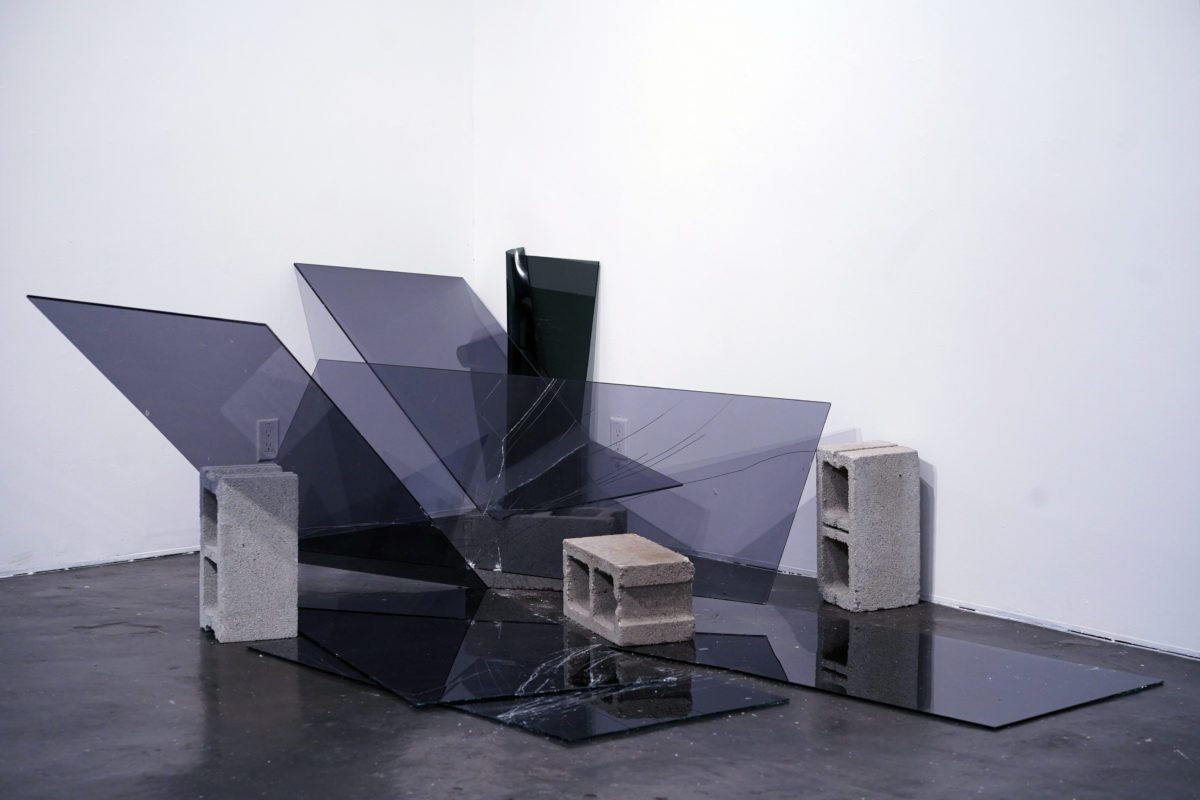on the balance (after collapse), 2021. Tempered, laminate safety glass, cinderblocks, enfolded glass, etched text with hire fire enamel.
Dimensions variable
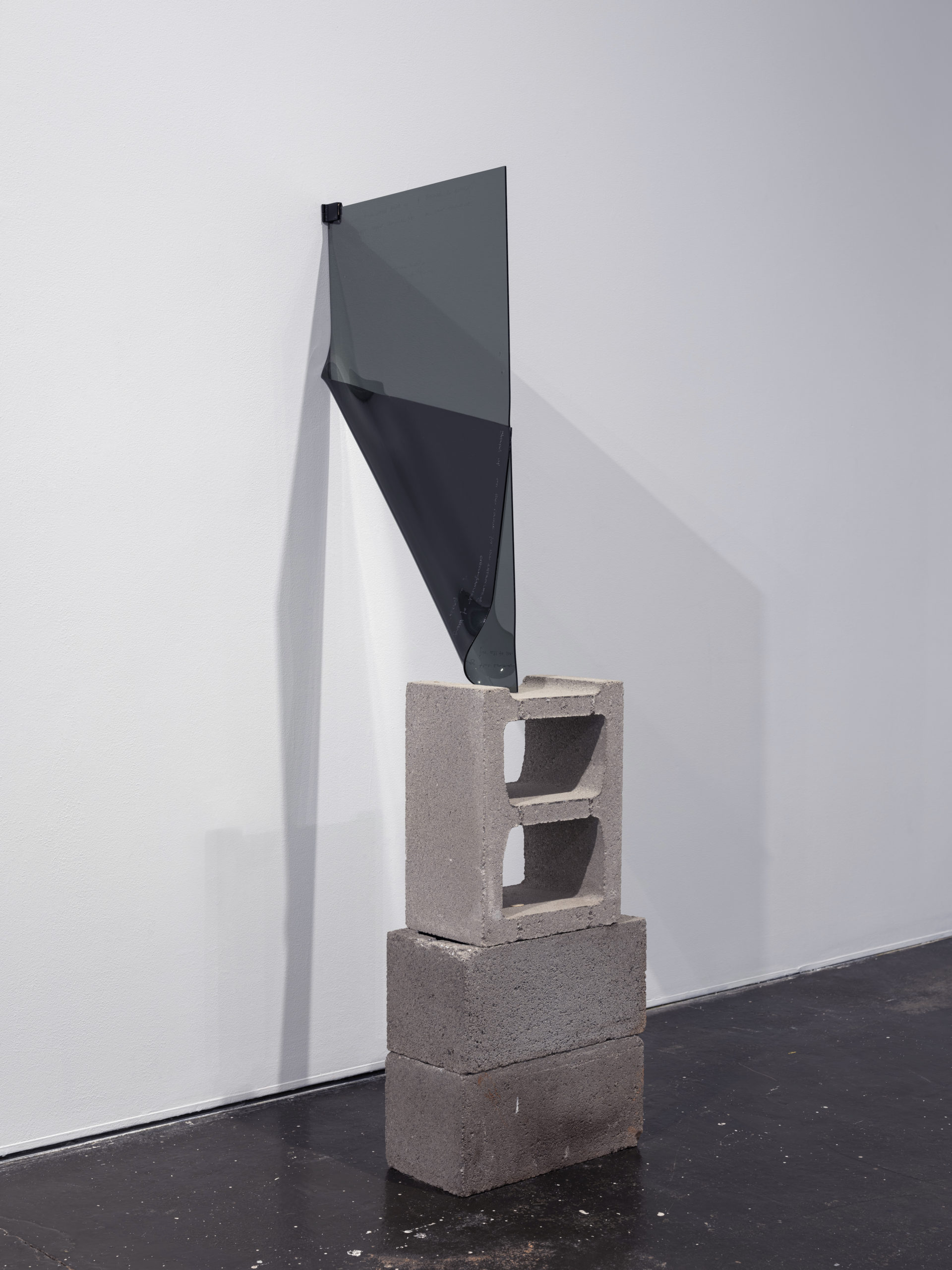
plained dreams, 2021.
Enfolded glass etched with text, cinder blocks.
60 x 30 in.
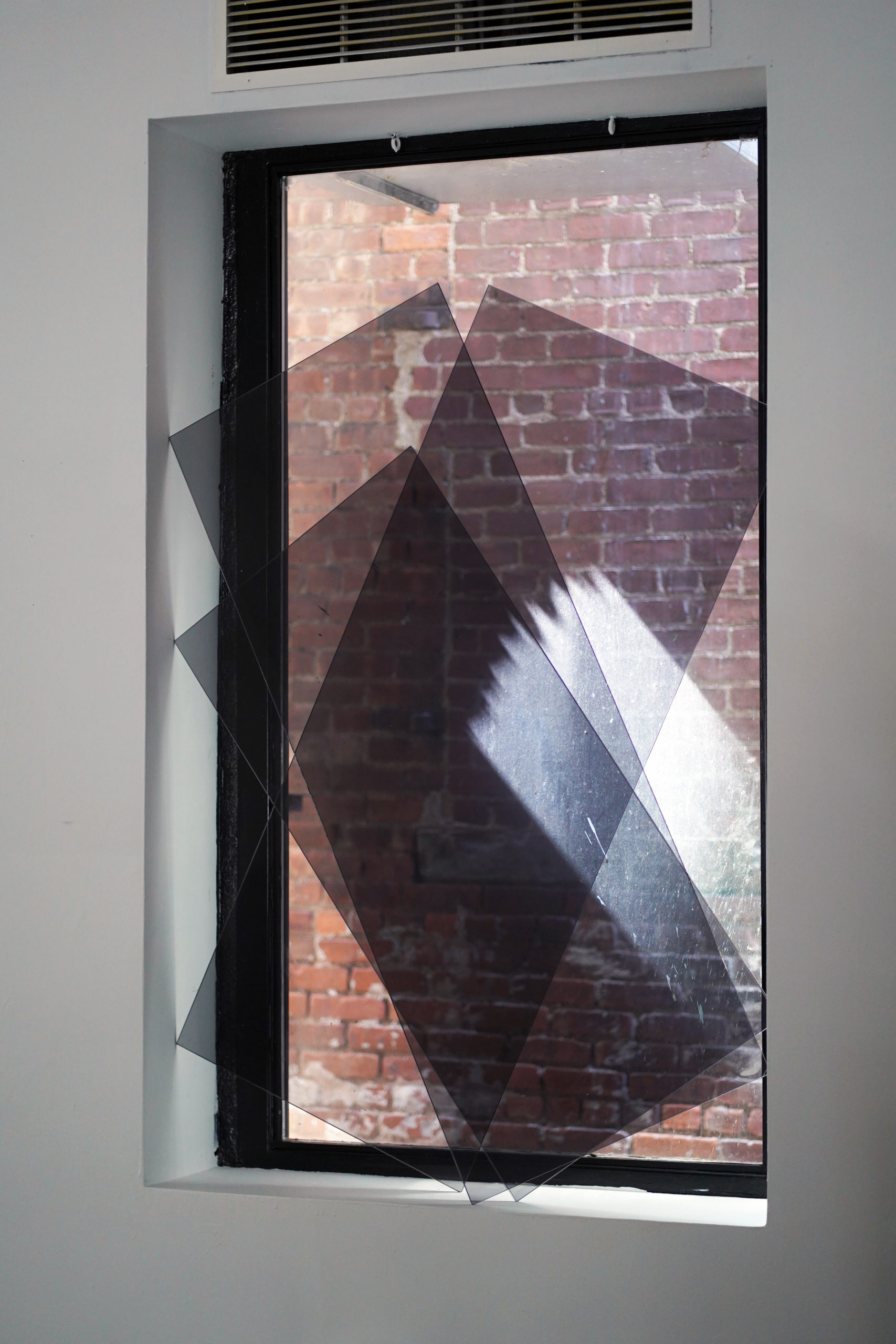
untitled (black points through the window pane), 2021.
Tempered, laminate, safety glass, balanced.
25 x 20 x 5 in.
This dream provides a preamble to a meditation on your sculptures because, on the one hand, thinking with peril as a creative instinct invites touch into a sculptural discourse and conjures boundaries built for pleasure and boundaries made in defense. We think of touch as an act, a trace, and a tool. Touch we know is also a weapon, a colonial instrument, and a condition that makes positions of free and unfree physically known. The dream makes me think of Black methodology as an occupational hazard, performances of freedom that cannot promise safety, and of Black shapes that question our desire for belonging. Peril as method, as “a knowing so deep it’s like a secret,” attempts to get within and between theories of abstraction and to animate this intimacy more like grammar or punctuation, telling you how to breathe under structures that disappear you. 1Toni Morrison, “A Knowing So Deep,” in What Moves at the Margin: Selected Nonfiction (Jackson, MS: University of Mississippi Press), 31.
On the other hand, the dream reminds me of what the late historian Stephanie Camp terms “architectures of intimate life,” where we “shift from the visibly organized to the invisible and informal […] towards structures that are mutable and secret.”2Stephanie Camp, Closer to Freedom: Enslaved Women and Everyday Resistance in the Plantation South (Chapel Hill. University of North Carolina Press … These architectures of intimate life, we might say, are created in the cracks of official histories haunted by the institution of slavery, Indigenous genocide, and postslavery containment. Like Camp, you redirect us toward a kind of Black sculptural resistance that eclipses dominant sight over the body and archive of the enslaved. You have corrupted Broken Windows Theory, an expression of the systematic patrol and disposal of Black life through a colonial logic that fears Black congregation.3George L. Kelling and James Q. Wilson, “Broken Windows: The Police and Neighborhood Safety,” The Atlantic (March 1982), … No, cultures of cruel design do not slip through your grasp; they are present in the very topology of these perilous pieces.
Katherine McKittrick writes of the plantation as a system that “folds over to repeat anew throughout Black lives."4Katherine McKittrick, “Plantation Futures,” Small Axe vol. 17, no. 3 (November 2013): 4. Emphasis added. For an annotation of the human … Drawing from McKittrick’s use of the fold as a temporal device that traces the brutality of the plantation against the postslavery present, I am reminded that Footbeat policing is one perverse expression of this paradox of colonial intimacy-through-surveillance. It makes state authority visible by closing the distance on domination, making it real and tangible and in your face. It is the work then of Black lives, to remain uncaptured, unspoken for, and undisciplined. To refuse becoming violently seen.5“Violently Seen” is a term that I borrow from Jasmine E. Johnson. Additionally, read her ethnographic letter “Dear Khary: An Autobiography of … “A folding to the flesh,” as you inscribe within one of these itinerant pieces, insurgently gestures towards life that refuses to be disappeared, but rather disappears itself. You suggest a grammatical shift towards ways of being that are not visibly organized but that are intimated, speculated, and felt.
There is a story—no, a poem (actually it’s a secret)—about a man who attempts to capture the spirit of a spider through a photograph. He thinks the reflection of the sun in his lens will not allow for it. He tries and tries again and even asks his wife to use her hand to shade and point so as to touch the spider, so he will have better luck capturing it. He breaks two cameras and three lenses in an attempt to catch the spider in her silver web. Later when he and his wife develop the film they draw “black and blanks” all, except one image that he makes out as a female figure with one sunken eye. The relationship between destruction and intimacy is what is important here: in an attempt to draw his subject close, Brathwaite breaks his medium. It is a narrative example of the way Black social lives undermine, trick, and ultimately shatter the terms of transparency.6Thank you Ishion Hutchinson for sharing this story of Namsetoura with me several years ago. Kamau Brathwaite, Born to Slow Horses (Middletown, CT: …
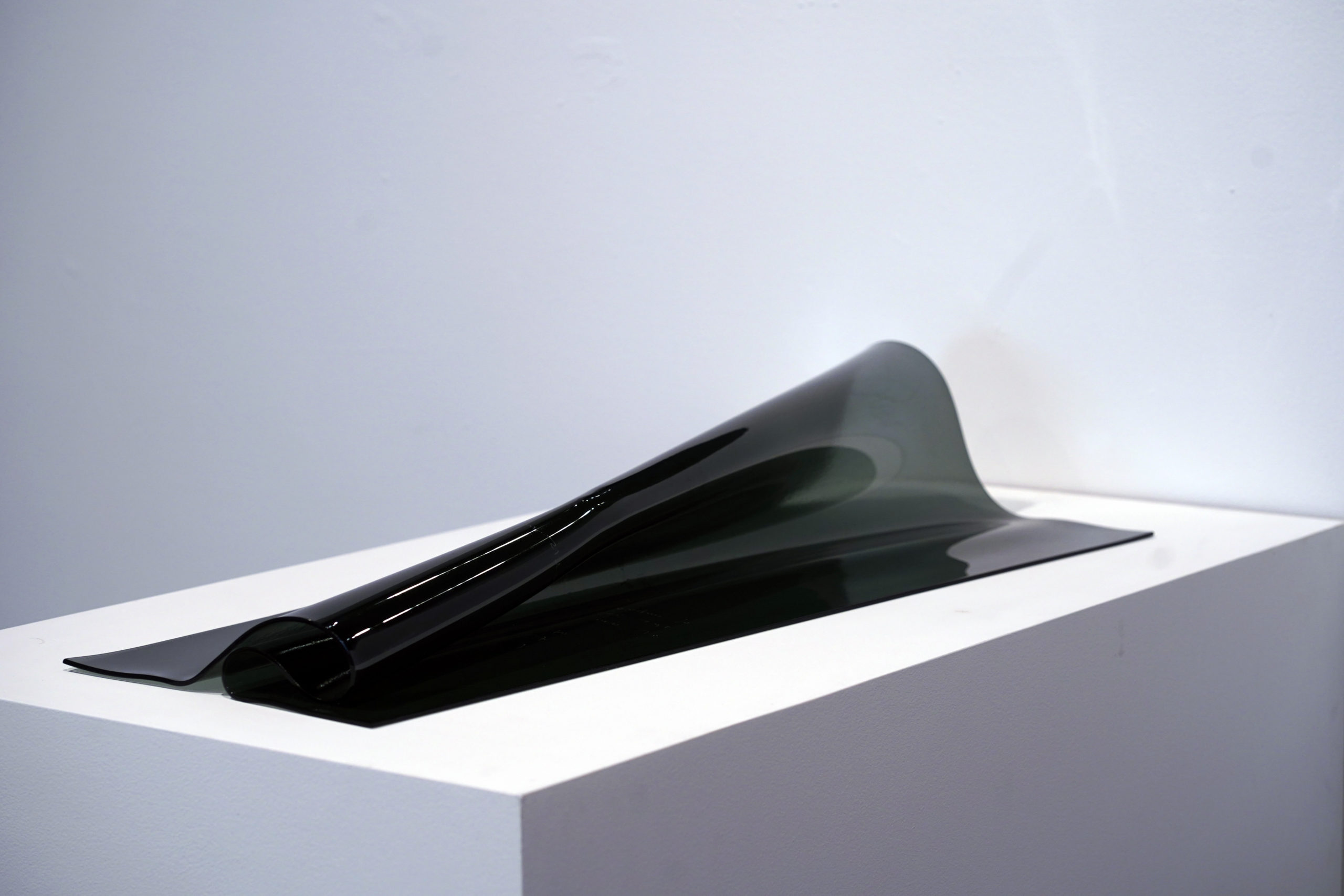
untitled (lean/wire fuses), 2021.
Layered, enfolded glass etched with text.
25 x 20 x 5 in.
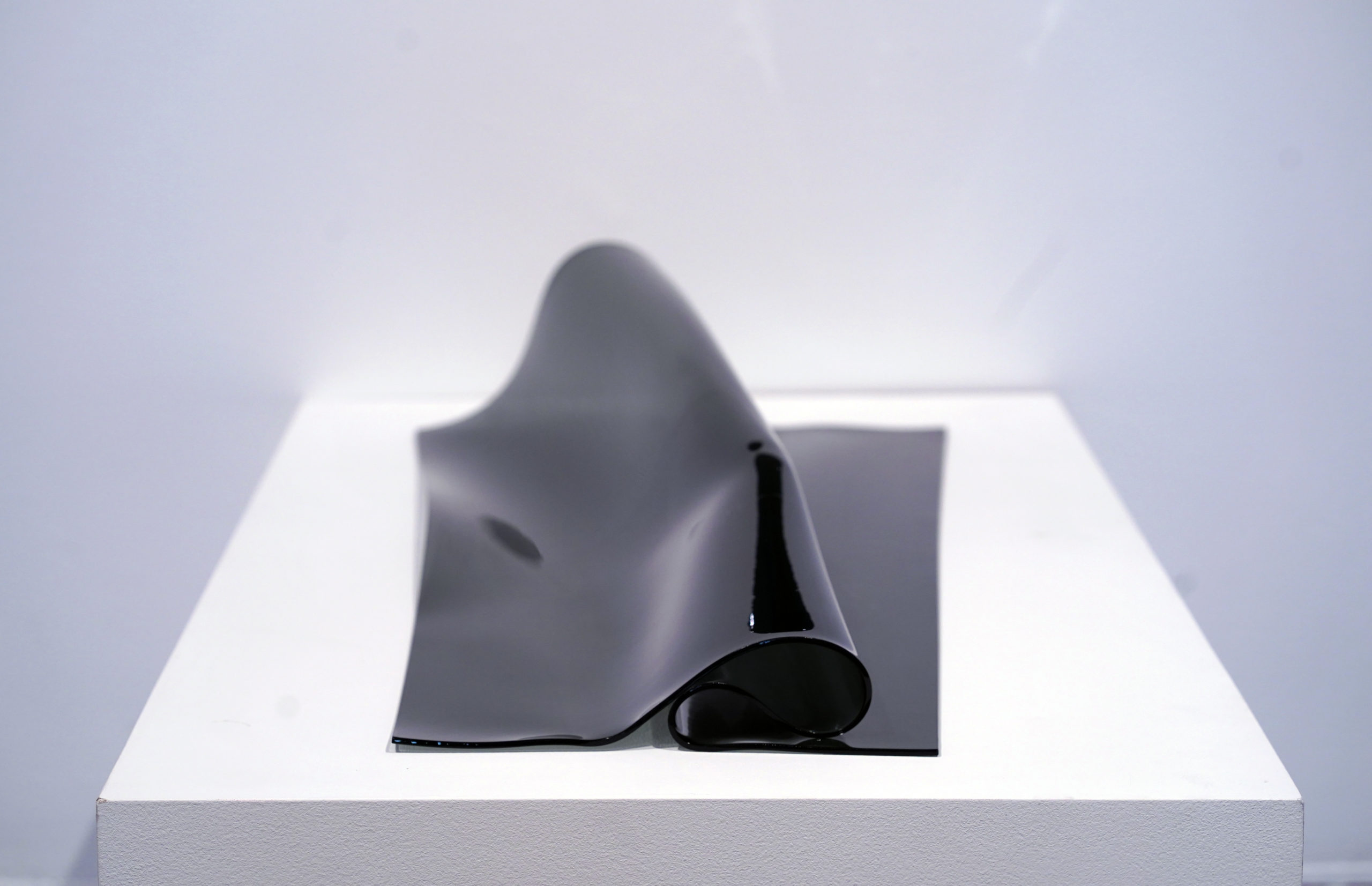
So, what is the nightmare I have woken up to? What is the danger that presents itself? I have trouble making out its eyes, its skin, its mouth. It remains shapeless and undiscovered to me. By attempting to summon it whole, I find myself cradling something unfigurable. Something that reveals a discomforting parallel to those systems that render Black life reformed, recovered, and recorded. The dream animates the analytical distance between the sharp edges of a discourse on abstraction and the peril of bringing that discourse close.
To be in peril is to know you are at risk of danger, to experience your body on the line. It is a function of feeling at once exposed and guarded, of being undesired and hypervisible. Peril is a condition that cannot be collapsed into a symbol, however. If some part of modern subjects long to feel structurally whole, intact, protected, why do you require us to move no other way than through peril? Is a personal shatter your sculptural demand? Rather, “peril” offers us a heuristic, a position from which to respond and to register your dangerous invitation into the affective life of politics. From this position, peril resists becoming a mere aesthetic symbol for black sociality. Through the fold the shatter, we know our methods must be dangerous and our tools must be sharp. “Everything now, we must assume, is in our hands; we have no right to assume otherwise.”7James Baldwin, The Fire Next Time (New York: Dial Press 1963), 105.

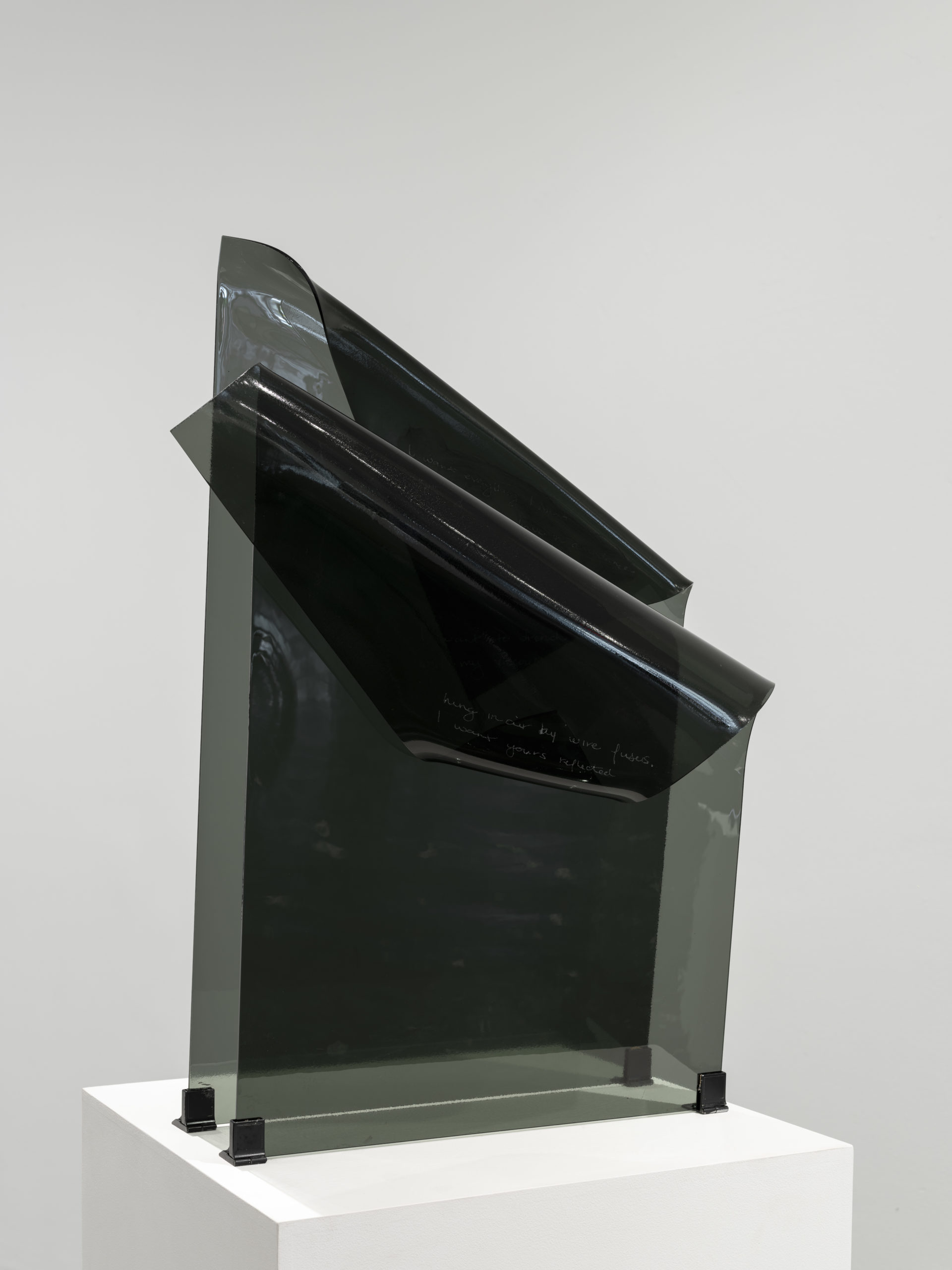
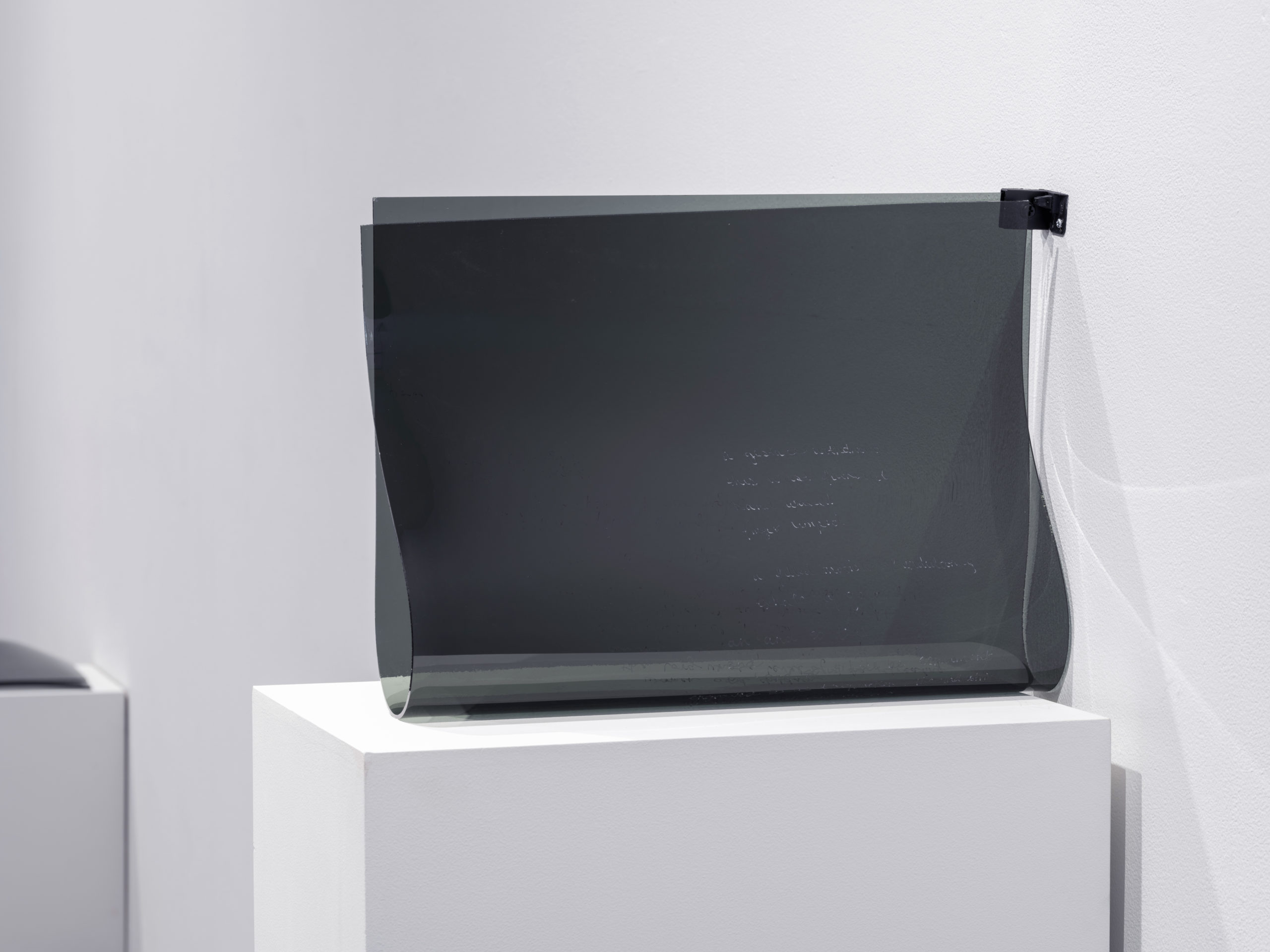
a gesture (power and might), 2021.
Enfolded glass etched with text.
15 x 20 x 4 in.
Photos by Sebastian Bach
References
